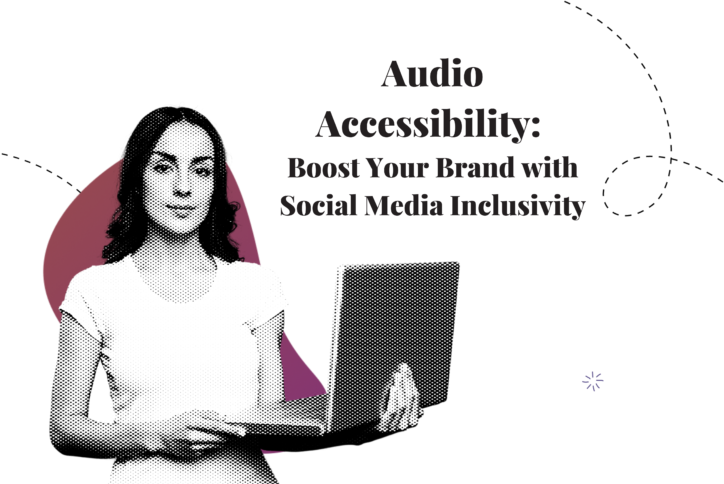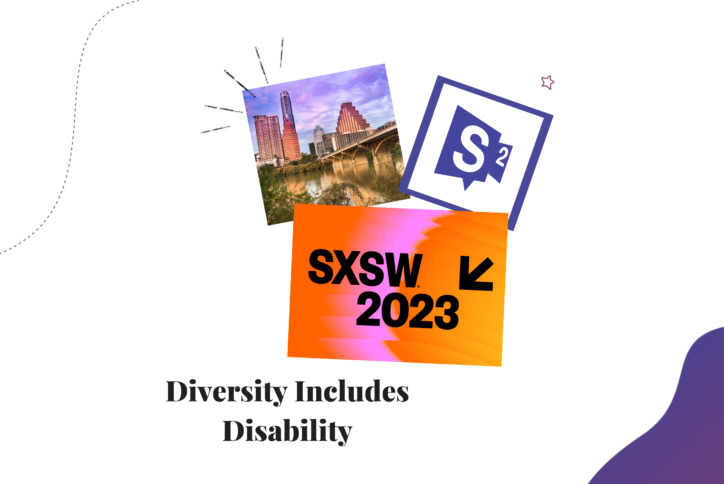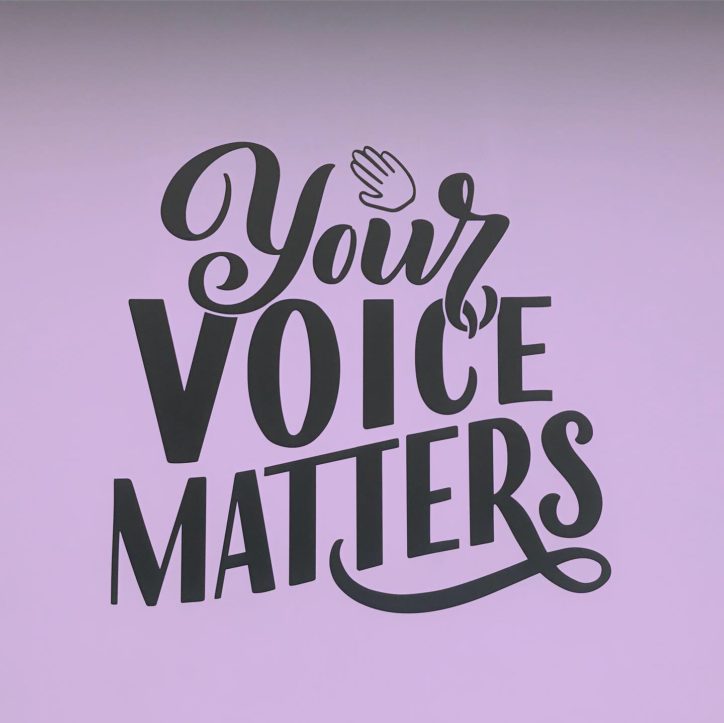At Sociality Squared, we believe accessibility should be standard, not an afterthought. Unfortunately, when it comes to web-based services, content, and other digital products, the experiences of people with disabilities or impairments are too often overlooked by developers, designers, and writers.
While some social networking platforms offer a few AI-based solutions, like automatically adding alt text or captions, the features are often lacking and leave people with an incomplete understanding of the content they’re trying to consume. More needs to be done.
The statistics are shocking: a recent study found that 98% of U.S.-based websites fail to comply with accessibility standards and there are no industry-wide social media content standards — yet! This leaves people with disabilities excluded and vulnerable in an increasingly digital world.
Our society must work to dismantle ableism.
That is no small task, of course. Yet, some of the most common web and content marketing accessibility issues, which can make the internet difficult or impossible to use for many people, are also very easy to fix.
You can ensure your web content is inclusive and accessible to all with just a small effort.
These eight web content accessibility dos and don’ts will help you get started.
Web Accessibility Checklist: 8 Do’s and Don’ts
Our society must work to dismantle ableism.
Inclusion Matters — and Web Accessibility is Good for Business
First, it’s important to understand that ableism impacts everyone.
Approximately one billion people, or 15% of the global population, have some type of disability. In the United States, the number is even higher: 26% or one in four U.S. adults. Pew Center Research has further shown that people with all types of disabilities are more likely to face a harsh digital divide. This is due in some cases to their specific type of disability, which may affect the way they interact with the web. It is also a result of the broader socioeconomic digital divide, which has a disproportionate impact on people with disabilities.
Any amount of discrimination is a problem. But when such a substantial proportion of the population faces inequity every day, it is incumbent on those who benefit from ableist systems and cultural norms to recognize their privilege and work to deconstruct ableism.
It’s the right thing to do. It’s also good for business.
Creating barriers that prevent a large segment of the population from accessing your content is shutting people out of your brand communities and from consuming your content— and products.
Additionally, many countries are incorporating web accessibility into civil rights legislation. This includes the U.S., where, in 2018, the Department of Justice asserted that website inaccessibility equates to noncompliance with the Americans with Disabilities Act.
That means that the consequences of inaccessibility may be both financial and legal.
Finally, although Google does not directly factor accessibility in search result ranking, a recent update to their page experience algorithm gives an advantage to pages that are easier to use.
For these reasons and more, inclusivity is a sound investment for your bottom line.

Do: Apply the P.O.U.R. Guidelines for Web Accessibility
The four principles of the Web Content Accessibility Guidelines (WCAG) are encapsulated in the acronym “P.O.U.R.,” which stands for Perceivable, Operable, Understandable, and Robust.
To determine whether your web content conforms to the WCAG principles, ask yourself these questions:
- Perceivable: Can people with disabilities actually tell your content exists?
- Operable: Is it easy for someone to navigate your website, including on a mobile device or for someone who only uses a keyboard?
- Understandable: Is the content jargon-free and written in plain language without idioms or innuendo?
- Robust: Does your content work with assistive technology like screen readers?

Don’t: Use Ableist Language
Everyone deserves dignity and respect and it starts with language. The use of ableist language is often casual or inadvertent. Nevertheless, it can be harmful and should be avoided in all copy and content
It’s about more than just hurt feelings; language that directly or indirectly devalues people with disabilities by suggesting they are abnormal or inferior reinforces and upholds the ableism which is embedded in our culture.
Furthermore, avoiding ableist language involves more than just listing offensive words. It’s essential to think about the language we use in general and make an effort to stay aware of the history, context, and cultural significance of the words and phrases we choose.
For example, some people use words like “crazy” when they mean “unbelievable” or use “retarded” when they mean “ridiculous.” There are more subtle forms of ableist language, as well. Phrases like “I stand with…,” “turn a blind eye to…,” or “fall on deaf ears,” as well as words like “crippling” and “lame” are all examples of the subtle ways ableism pervades idiomatic English.
Instead, adopt people-first language — language that places the person first, not the disability, and emphasizes abilities and the need for accessibility, not limitations. When referring to a person with a disability, refer to the person first by using phrases such as “a person who…” or “a person who has…” For example, rather than describing someone as “mute” or saying they “can’t talk,” place the person first by describing them as someone “who uses a device to speak.”

Do: Consider Color Contrast and Readability
High contrast text is easier to read for all users but can be critical for people with vision impairments, low contrast vision, or colorblindness.
Check your contrast and aim for a contrast ratio (ratio of the luminance of the brightest shade to that of the darkest shade) of 4.5:1. Small text or narrow fonts require higher contrast than bold text or large text.
There are many free online contrast checker tools. One of our favorite web accessibility resources, WebAIM, offers a free contrast checker we often use at S2, which can be found by clicking here. Of course, the input of an accessibility expert is always the most reliable approach.
Do: Use “CamelCase” in Hashtags
Another often-overlooked element of readability is hashtag capitalization. Using “CamelCase,” or title case makes your hashtags easier to scan and comprehend quickly. It also allows screen readers to understand where each word in the tag begins and ends.
For example, instead of writing “#webaccessibilitytips” or “#WEBACCESSIBILITYTIPS,” write “#WebAccessibilityTips.”

Don’t: Overuse Emojis
Screen readers translate images using alt-text. That means that although an emoji may look like a picture on your end, for the person consuming your content, it may be read aloud as something like: “:smiling-face-with-open-mouth-and-tightly-closed-eyes:.”
For this reason, avoid over-using or repeating emojis or using them in place of words. Make sure your emojis add relevant value to your message and be thoughtful about where you place them. (For accessibility, it’s best to place emojis at the end of your message or post.)
Be mindful of cultural context and double meanings, as well.
Do: Provide Image Descriptions and Captions
On the subject of alt-text, including written descriptions of images is very helpful for those who may not be able to view the image for whatever reason. You can add descriptions to the alt-text, which will be read aloud by screen readers, indexed by search engines, and displayed on the page if the image fails to load.
Another way to provide image descriptions is by adding them to a caption. This is especially useful on social media platforms, where alt-text may not be an option.
Closed captions are also critical for audio and video content. Some platforms provide auto-captioning, and others do not. Be aware of how to provide captions on every platform you use, and don’t forget to check auto-captions for accuracy.
Use tools like Clipomatic or Rev.com if you need support creating captions.
Don’t: Create “Inspiration Porn”
In 2021, some in the disability community criticized a Toyota Super Bowl ad spotlighting Paralympic gold-medallist swimmer Jessica Long. For example, opinion contributor and disabilities advocate Daniel Golden pointed out in an AdWeek article that Toyota had problematically presented Long’s story from an ableist perspective.
By emphasizing the challenges of Long’s disability to invoke pity in service of a narrative primarily aimed at viewers without disabilities, critics suggested that Toyota had created “inspiration porn,” objectifying and dehumanizing people with disabilities.
“Inspiration porn” is a term coined by the late comedian, journalist, educator, and disability activist Stella Young. It refers to society’s habit of portraying people with disabilities as being inspirational to able-bodied people — their life experiences are co-opted and used to motivate people who are not disabled, rather than to uplift people in the disability community. Young further popularized the concept in her 2014 TedxTalk, in which she proclaimed “I’m not your inspiration, thank you very much!”
You can avoid repeating Toyota’s same mistake by including ideas, impressions, or quotations from people with disabilities in your content, especially if that content relates to disability. It is also essential to always get consent and input when sharing photos or videos of someone and consider whether your content targets a disability or non-disability audience.
Finally, don’t speak of disability as an affliction, burden, or tragedy, and whenever possible, pass the mic to a person with a disability who can tell their own story.
Do: Include Content Warnings
You never know the history of others who are reading your content.
However, you can empower individuals to decide whether they want to interact with posts that could cause emotional or physical distress by using phrases like “Content Warning,” “Trigger Warning,” “CW,” or “TW” before any content that addresses sensitive topics.
These notices simply flag the content to alert the reader, listener, or viewer that it may trigger physiological or psychological symptoms for some. They can then prepare themselves to engage or, if needed, disengage from the content to preserve their wellbeing.
Some common content warnings to consider include (but are not limited to):
- Sexual assault
- Abuse
- Self-harm and suicide
- Eating disorders, fatphobia
- Violence
- Death or dying
- Miscarriages/abortion
- Blood
- Mental illness
- Racism and racial slurs
- Sexism and misogyny
- Hateful language
- Transphobia and trans misogyny
- Homophobia and heterosexism

S2’s Commitment to Web Accessibility
Nobody is perfect, and there is always room to improve inclusivity and accessibility in our businesses and personal lives. At S2, we believe the most important step is the first one — just getting started. Making continuous progress towards equity is more important than getting it perfectly right on the first try.
We work to build diversity and accessibility into the fabric of S2, but we also acknowledge the gaps in our understanding and the fact that we will sometimes make mistakes.
Nonetheless, Sociality Squared is committed to continuously getting outside perspectives and expertise, auditing our own work, fostering diversity within our team, and constantly working to improve ourselves and our society.
Towards that end, the entire S2 team will be receiving accessibility training, with a full S2 web accessibility program rolling out next year.
Additionally, here are some advocates we recommend following for perspectives from the disability community:
- Andrew Pulrang
- Haben Girma
- ChanceyFleet
- Mark Greenfield
- Alice Wong
- Kendall Ciesemier
- Carly Findlay
- Imani Barbarin
- Any many more!
For a comprehensive social media and content marketing audit that includes web accessibility, reach out today.
Subscribe to our our monthly S2xAccess newsletter:





